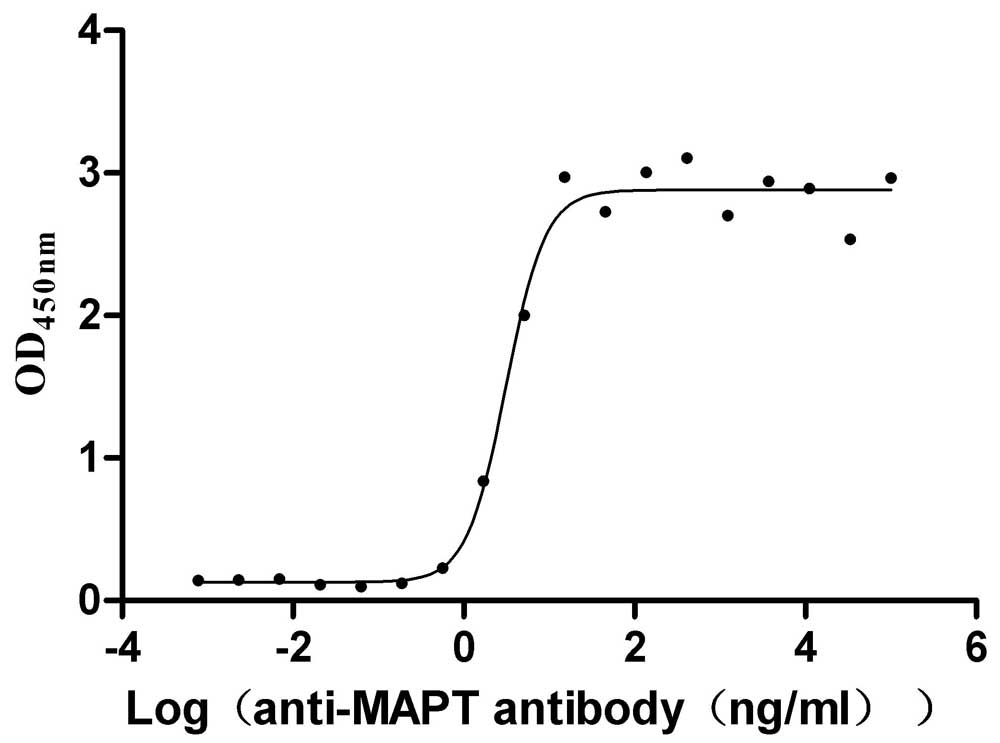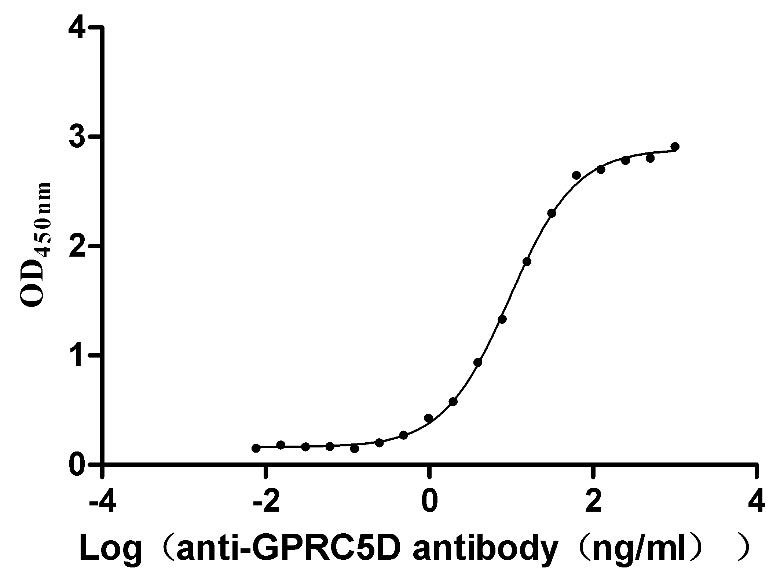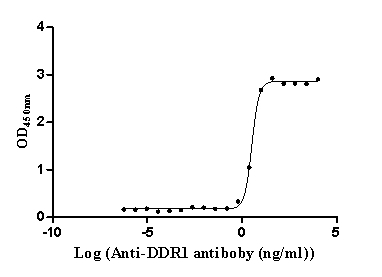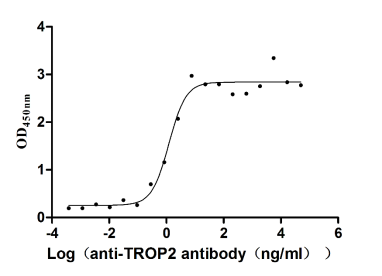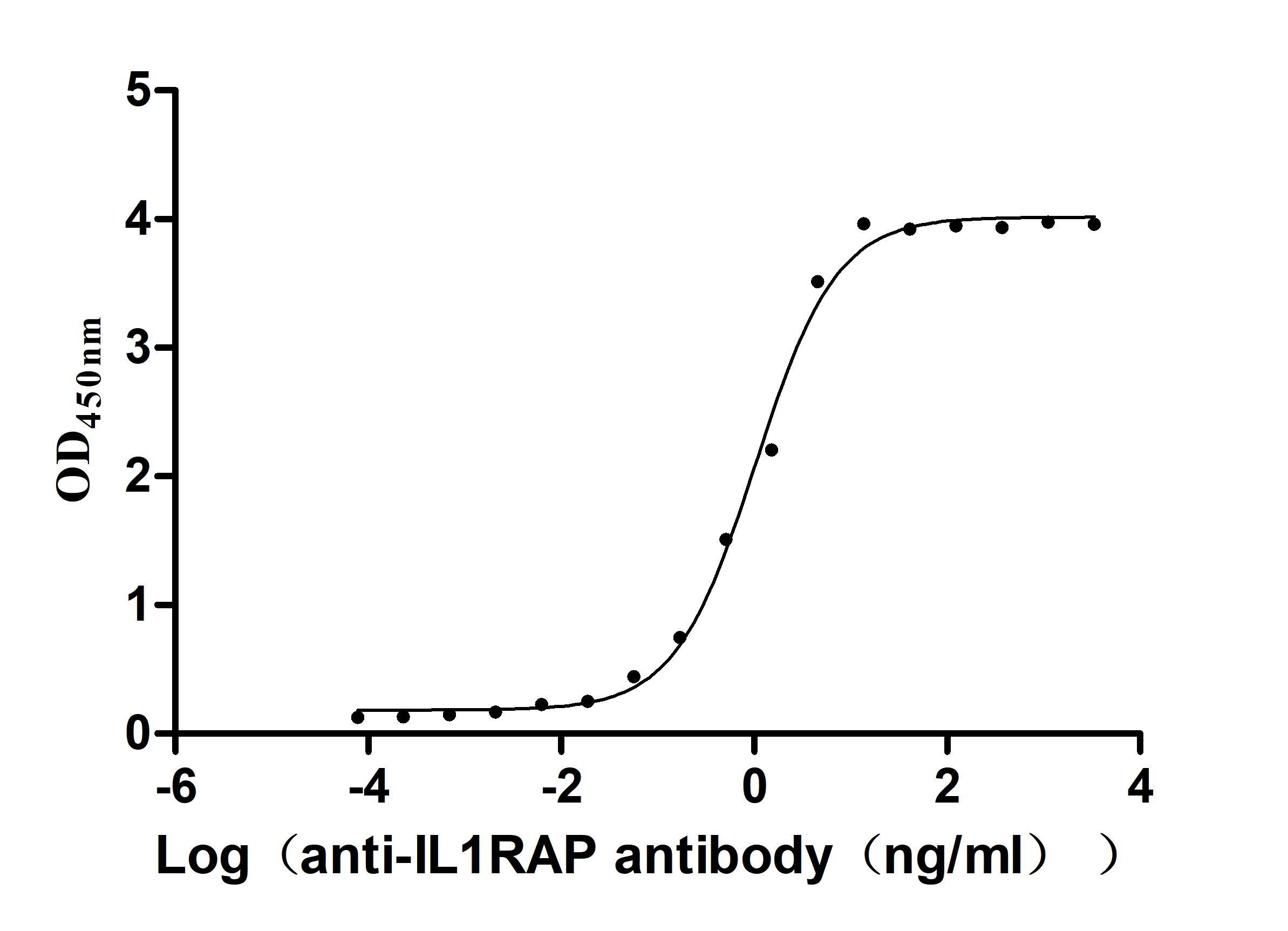Recombinant Arabidopsis thaliana Protein CCA1 (CCA1), partial
-
中文名称:Recombinant Arabidopsis thaliana Protein CCA1(CCA1) ,partial
-
货号:CSB-YP309373DOA
-
规格:
-
来源:Yeast
-
其他:
-
中文名称:Recombinant Arabidopsis thaliana Protein CCA1(CCA1) ,partial
-
货号:CSB-EP309373DOA
-
规格:
-
来源:E.coli
-
其他:
-
中文名称:Recombinant Arabidopsis thaliana Protein CCA1(CCA1) ,partial
-
货号:CSB-EP309373DOA-B
-
规格:
-
来源:E.coli
-
共轭:Avi-tag Biotinylated
E. coli biotin ligase (BirA) is highly specific in covalently attaching biotin to the 15 amino acid AviTag peptide. This recombinant protein was biotinylated in vivo by AviTag-BirA technology, which method is BriA catalyzes amide linkage between the biotin and the specific lysine of the AviTag.
-
其他:
-
中文名称:Recombinant Arabidopsis thaliana Protein CCA1(CCA1) ,partial
-
货号:CSB-BP309373DOA
-
规格:
-
来源:Baculovirus
-
其他:
-
中文名称:Recombinant Arabidopsis thaliana Protein CCA1(CCA1) ,partial
-
货号:CSB-MP309373DOA
-
规格:
-
来源:Mammalian cell
-
其他:
产品详情
-
纯度:>85% (SDS-PAGE)
-
基因名:CCA1
-
Uniprot No.:
-
别名:CCA1; At2g46830; F19D11Protein CCA1; MYB-related transcription factor CCA1; Protein CIRCADIAN CLOCK ASSOCIATED 1
-
种属:Arabidopsis thaliana (Mouse-ear cress)
-
蛋白长度:Partial
-
蛋白标签:Tag type will be determined during the manufacturing process.
The tag type will be determined during production process. If you have specified tag type, please tell us and we will develop the specified tag preferentially. -
产品提供形式:Lyophilized powder
Note: We will preferentially ship the format that we have in stock, however, if you have any special requirement for the format, please remark your requirement when placing the order, we will prepare according to your demand. -
复溶:We recommend that this vial be briefly centrifuged prior to opening to bring the contents to the bottom. Please reconstitute protein in deionized sterile water to a concentration of 0.1-1.0 mg/mL.We recommend to add 5-50% of glycerol (final concentration) and aliquot for long-term storage at -20℃/-80℃. Our default final concentration of glycerol is 50%. Customers could use it as reference.
-
储存条件:Store at -20°C/-80°C upon receipt, aliquoting is necessary for mutiple use. Avoid repeated freeze-thaw cycles.
-
保质期:The shelf life is related to many factors, storage state, buffer ingredients, storage temperature and the stability of the protein itself.
Generally, the shelf life of liquid form is 6 months at -20°C/-80°C. The shelf life of lyophilized form is 12 months at -20°C/-80°C. -
货期:Delivery time may differ from different purchasing way or location, please kindly consult your local distributors for specific delivery time.Note: All of our proteins are default shipped with normal blue ice packs, if you request to ship with dry ice, please communicate with us in advance and extra fees will be charged.
-
注意事项:Repeated freezing and thawing is not recommended. Store working aliquots at 4°C for up to one week.
-
Datasheet :Please contact us to get it.
靶点详情
-
功能:Transcription factor involved in the circadian clock and in the phytochrome regulation. Binds to the promoter regions of APRR1/TOC1 and TCP21/CHE to repress their transcription. Binds to the promoter regions of CAB2A and CAB2B to promote their transcription. Represses both LHY and itself.
-
基因功能参考文献:
- Data show that binding of LWD1 and TEOSINTE BRANCHED 1-CYCLOIDEA-PCF20 (TCP20) and TCP22 to the TCP-binding site in the CIRCADIAN CLOCK ASSOCIATED1 (CCA1) promoter activates CCA1. PMID: 27734958
- undergoes dynamic sumoylation, which directly alters the binding affinity to the evening element PMID: 29172852
- These results show that the guard cell oscillator is different from the average plant oscillator, and that the differences in guard cell oscillator function may be important for the correct regulation of photoperiod pathway genes that have previously been reported to control stomatal aperture. PMID: 29084902
- Direct binding by CCA1 in the morning provides strong repression of PRR5, and repression by CCA1 also temporally regulates an evening-expressed gene set that includes PRR5. PMID: 26941090
- the diurnal changes of endogenous melatonin may regulate corresponding changes of AtCBF/DREB1s expression and their underlying diurnal cycle of plant immunity and AtCCA1. PMID: 26828406
- Results show that TOC1 and CCA1 mRNA transcription levels are regulated by the newly identified Hesp gene and suggest a deadenylation as a mechanism involved in the regulation of the circadian clock. [hesp] PMID: 26619288
- work revealed several CCA1 targets that do not cycle in either LL or LD conditions. Together, our results emphasize an expanded role for the clock in regulating a diverse category of genes and key pathways in Arabidopsis PMID: 26261339
- Transcriptional co-regulators PRR9, PRR7 and PRR5 inhibit circadian clock morning loop CCA1 expression by binding to its promoter. PMID: 24267177
- Histone 3 activating marks associated with the translational start sites of CCA1/LHY and TOC1 are circadian regulated. PMID: 23128602
- the promoter activity of A. thaliana core clock genes CCA1 and PRR5 in heterologous L. japonicus cells PMID: 23221703
- CCA1 activity is self-regulated by a splice variant CCA1beta and the CCA1beta production is modulated by low temperatures, linking the circadian clock with cold acclimation. PMID: 22899064
- Rhythmic expression of CCA1 under light-dark cycling conditions correlates with histone modification. PMID: 22878891
- We propose CCA1 as a master regulator of Reactive-Oxygen-Species homeostasis through association with the Evening Element in promoters of ROS genes in vivo to coordinate time-dependent responses to oxidative stress. PMID: 23027948
- dynamic self-regulation of CCA1 underlies the circadian clock regulation of temperature responses in Arabidopsis PMID: 22715042
- Our computational analysis suggests that TOC1 is a repressor of the morning genes Late Elongated Hypocotyl and Circadian Clock Associated1 rather than an activator as first conceived. PMID: 22395476
- Interaction of Arabidopsis DET1 with CCA1 in mediating transcriptional repression in the plant circadian clock. PMID: 21884973
- CCA1 interacts with the BOA promoter and regulates its expression. PMID: 21447790
- role in circadian oscillatory regulation of chloroplastic thioredoxins f and m PMID: 21196476
- CCA1/LHY-mediated output from the circadian clock contributes to plant cold tolerance through regulation of the CBF cold-response pathway. PMID: 21471455
- defence genes are under circadian control by CCA1, allowing plants to 'anticipate' infection at dawn when the pathogen normally disperses the spores and time immune responses according to the perception of different pathogenic signals upon infection PMID: 21293378
- Expression of CCA1 is regulated in part by a regulatory element within the 5'UTR. PMID: 20119844
- This study demonstrated a light-entrained circadian clock regulates ethylene release from unstressed, wild-type Arabidopsis (Arabidopsis thaliana) seedlings, with a peak in the mid-subjective day. PMID: 15516515
- A functional interaction between the CCA1 clock component and one of the PRR family members, PRR5, by employing transgenic lines overexpressing both the CCA1 and PRR5 genes is reported. PMID: 15725674
- TOC1 regulates the floral transition in a CCA1/LHY-dependent manner while CCA1/LHY functions upstream of TOC1 in regulating a photomorphogenic process. PMID: 17483414
- The linkages of TOC1, CCA1 and LHY genes and the canonical CO-FT flowering pathway were studied. PMID: 17540692
- This study suggests that the combination of light regulation of CCA1 transcription and CCA1 messenger RNA degradation is important for ensuring that the Arabidopsis circadian oscillator is accurately entrained by environmental changes. PMID: 17873091
- Regulation of CCA1 by organic N signals may represent a novel input mechanism for N-nutrients to affect plant circadian clock function. PMID: 18344319
- data suggests that CCA1 acts predominantly as a transcriptional repressor in nature PMID: 18460819
- CCA1 and LHY delay flowering time under continuous light by reducing the accumulation of SVP. PMID: 19011118
- CCA1 and LHY function synergistically in regulating circadian rhythms of Arabidopsis. PMID: 19218364
- CCA1 is localized to the nucleus in vivo and that there is no significant delay between the translation of CCA1 and its translocation to the nucleus. PMID: 19339503
显示更多
收起更多
-
亚细胞定位:Nucleus. Note=Moves into the nucleus very soo after translation. This translocation is unaffected by light and dark.
-
组织特异性:Expressed in leaves, roots, stems, flowers and siliques.
-
数据库链接:
Most popular with customers
-
Recombinant Macaca mulatta Microtubule-associated protein tau (MAPT) (Active)
Express system: Mammalian cell
Species: Macaca mulatta (Rhesus macaque)
-
Recombinant Human G-protein coupled receptor family C group 5 member D (GPRC5D)-VLPs (Active)
Express system: Mammalian cell
Species: Homo sapiens (Human)
-
Recombinant Human Epithelial discoidin domain-containing receptor 1 (DDR1), partial (Active)
Express system: Mammalian cell
Species: Homo sapiens (Human)
-
Recombinant Human Tumor-associated calcium signal transducer 2 (TACSTD2), partial (Active)
Express system: Mammalian cell
Species: Homo sapiens (Human)
-
Recombinant Macaca fascicularis Interleukin 1 receptor accessory protein(IL1RAP), partial (Active)
Express system: Mammalian cell
Species: Macaca fascicularis (Crab-eating macaque) (Cynomolgus monkey)


